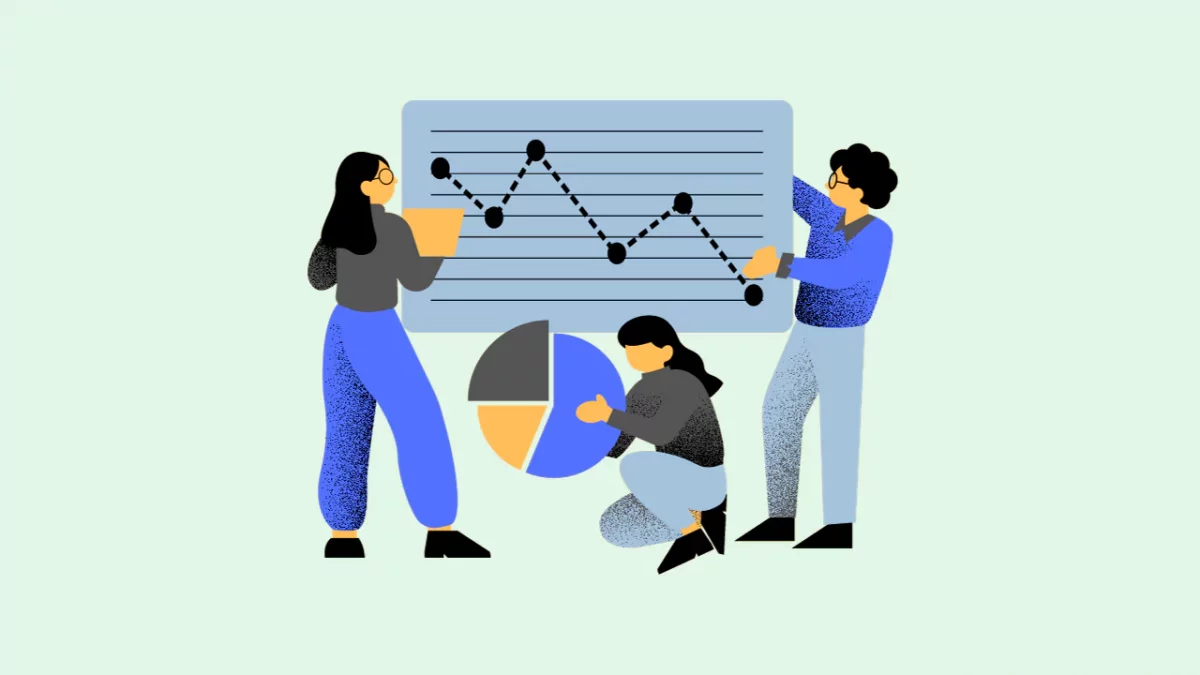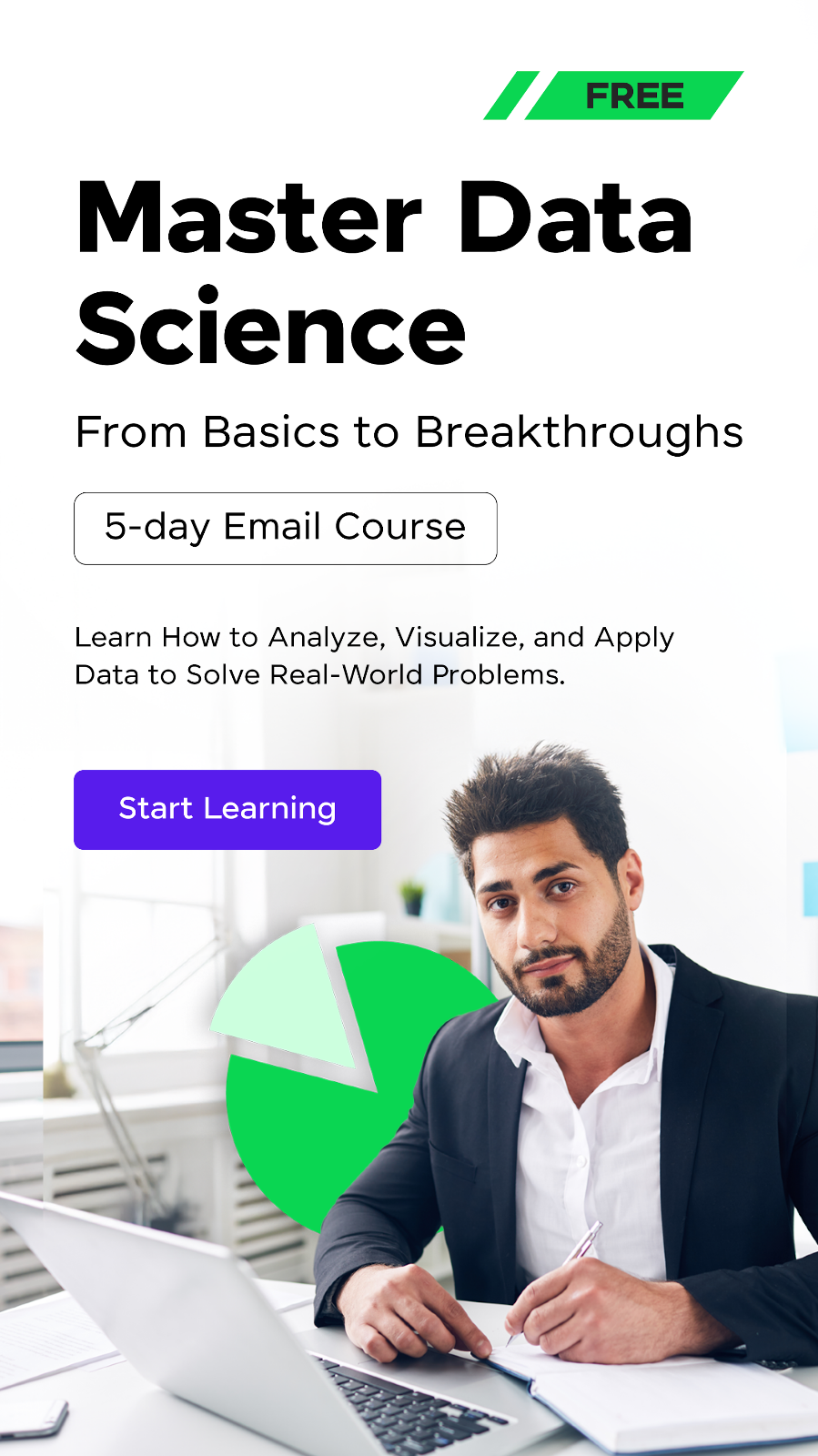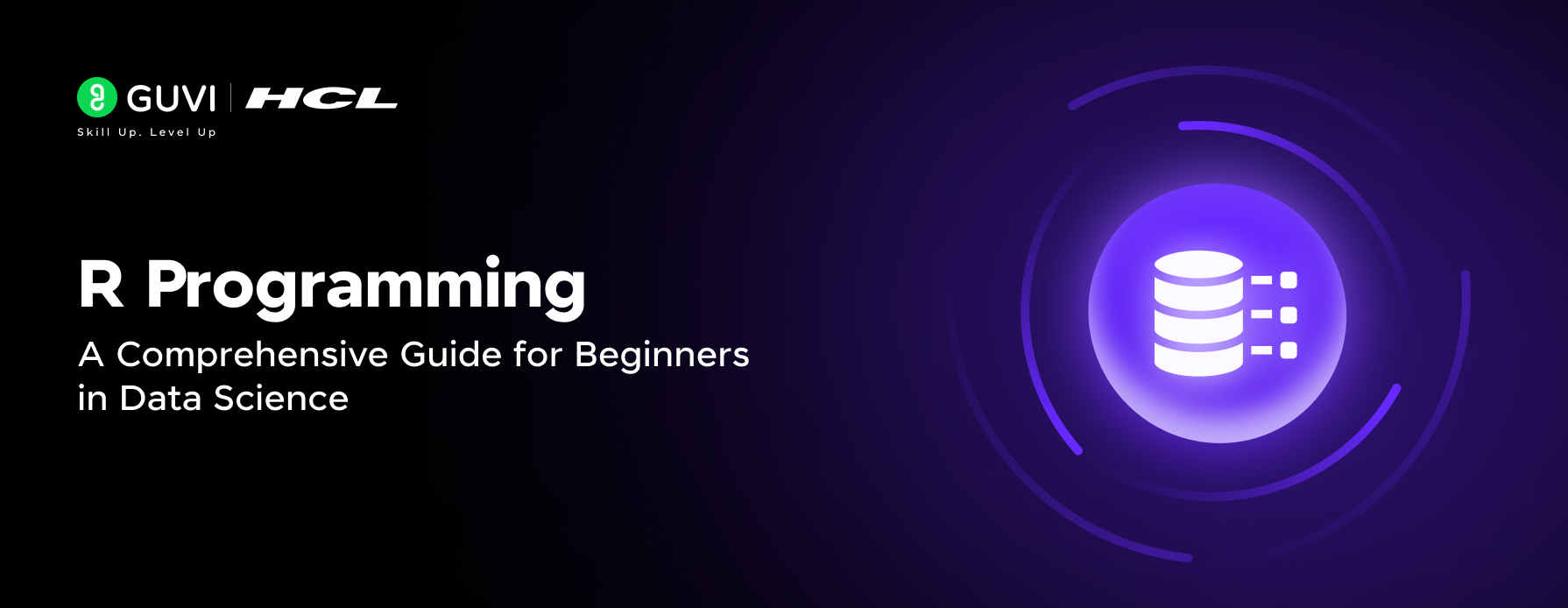
Roles and Responsibilities of a Data Scientist
Mar 20, 2025 6 Min Read 21179 Views
(Last Updated)
Data science is a rapidly growing field that has become essential for businesses to thrive in the digital age. As organizations wrestle with large volumes of data, the need for skilled professionals who can extract valuable insights has skyrocketed.
This is where data scientists come into play. In this comprehensive guide, we will explore the job description, roles, and responsibilities of a data scientist, as well as the skills required to excel in this field.
So, if you are considering a career as a data scientist or want to learn more about this exciting profession, read on!
Table of contents
- What is a Data Scientist?
- Data Scientist Job Description
- Data Scientist Roles and Responsibilities
- Data Mining and Extraction
- Data Cleaning and Preprocessing
- Exploratory Data Analysis
- Machine Learning and Model Development
- Data Visualization and Reporting
- Collaboration and Communication
- Continuous Learning and Professional Development
- How to Become a Data Scientist
- Lets Talk Salaries
- Data Scientist Career Path
- Conclusion
- Frequently Asked Questions...
- What are the 4 roles in data science?
- What are the 3 main functions of data science?
- What are the 5 levels of data science?
- What are the 3 C's of data science?
- What is the primary goal of a data scientist?
What is a Data Scientist?

A data scientist is a tech professional that collects, analyzes, and interprets vast amounts of data using analytical, statistical, and programming skills.
They are responsible for mining valuable information from various sources and transforming it into actionable insights that can drive business growth.
In today’s data-driven world, organizations rely on data scientists to uncover patterns, identify trends, and develop innovative solutions to complex business problems.
Before we move into the next section, ensure you have a good grip on data science essentials like Python, MongoDB, Pandas, NumPy, Tableau & PowerBI Data Methods. If you are looking for a detailed course on Data Science, you can join GUVI’s Data Science Course with Placement Assistance. You’ll also learn about the trending tools and technologies and work on some real-time projects.
Additionally, if you want to explore Python through a self-paced course, try GUVI’s Python course.
Data Scientist Job Description

The job description of a data scientist revolves around working with data and applying analytical techniques to derive meaningful insights.
They collect and analyze data, develop predictive models and algorithms, and present their findings in a clear and concise manner. Given below are some of the key responsibilities of a data scientist:
- Data Collection: Data scientists gather data from multiple sources, including databases, APIs, and other relevant sources. They ensure that the data is accurate, complete, and properly structured for analysis.
- Data Cleaning and Preprocessing: Before analysis can take place, data scientists must clean and preprocess the data to remove any inconsistencies, errors, or missing values. This step is crucial to ensure accurate results.
- Exploratory Data Analysis: Data scientists perform exploratory data analysis to gain insights and identify patterns in the data. They use statistical techniques and data visualization tools to understand the underlying trends and relationships.
- Model Building and Machine Learning: They also create models and develop machine learning algorithms to predict outcomes, classify data, or make recommendations. They select appropriate algorithms, train, and test models, and fine-tune them for optimal performance.
- Data Visualization: Communicating complex findings to non-technical stakeholders is an essential part of a data scientist’s role. They use data visualization tools like Matplotlib, ggplot, and Tableau to create visually appealing and informative charts, graphs, and dashboards.
- Business Strategy and Decision Making: Data scientists work closely with business and IT teams to understand the organization’s goals and challenges. They provide insights and recommendations to drive strategic decision-making and help the company achieve its objectives.
- Continuous Learning and Improvement: The field of data science is constantly evolving, and data scientists must keep up with the latest trends, technologies, and best practices. They stay updated on new tools, algorithms, and techniques to enhance their skills and deliver innovative solutions.
Data Scientist Roles and Responsibilities

The specific roles and responsibilities of a data scientist may differ based on the organization and industry. However, there are some common tasks that most data scientists are expected to perform. Let’s take a closer look at these roles and responsibilities:
1. Data Mining and Extraction
One of the primary tasks of a data scientist is to extract valuable data from various sources. This includes collecting structured and unstructured data from databases, websites, APIs, social media platforms, and other relevant sources.
They must have a deep understanding of data collection techniques and tools to ensure the data is accurate and reliable.
2. Data Cleaning and Preprocessing
Data scientists usually spend a large amount of time cleaning and preprocessing data. This involves removing duplicate records, handling missing values, dealing with outliers, and transforming the data into a suitable format for analysis.
Data cleaning is crucial to ensure the accuracy and integrity of the data.
3. Exploratory Data Analysis
Before diving into complex modeling and analysis, data scientists perform exploratory data analysis (EDA) to gain insights into the data. They use statistical techniques and data visualization tools to identify patterns, trends, and relationships within the data.
EDA helps them understand the data and uncover potential opportunities or challenges.
4. Machine Learning and Model Development
Machine learning is a core component of a data scientist’s work. They develop and train machine learning models to solve specific business problems. This involves selecting appropriate algorithms, preprocessing the data, and evaluating the performance of the models.
Data scientists continuously iterate and refine their models to improve accuracy and predictive power.
5. Data Visualization and Reporting
Data scientists need to be able to effectively communicate their findings to both technical as well as non-technical stakeholders. They use data visualization tools to create charts, graphs, and dashboards that convey complex information in a clear and concise manner.
Visualization helps stakeholders understand the insights derived from the data and make informed decisions.
6. Collaboration and Communication
Data scientists collaborate with various teams within the organization, including business, IT, and executive teams. They work closely with domain experts to understand business requirements and translate them into data-driven solutions.
Effective communication skills are essential to convey technical concepts to non-technical stakeholders and build strong working relationships.
7. Continuous Learning and Professional Development
The field of data science is rapidly evolving, and data scientists must stay updated with the latest tools, techniques, and industry trends. They actively engage in continuous learning through online courses, workshops, conferences, and networking events.
They need to be passionate about expanding their knowledge and skills to deliver innovative solutions.
How to Become a Data Scientist

Building a career in data science requires a combination of education, practical experience, and continuous learning. Here are some steps you can take to kickstart your data science career:
- Acquire the Required Skills: Start by gaining proficiency in programming languages like Python or R, as well as statistics and mathematics. Familiarize yourself with machine learning algorithms and data visualization tools.
- Earn a Degree or Certification: While not always mandatory, a degree in a relevant field can give you a competitive edge. Consider pursuing a bachelor’s or master’s degree in computer science, engineering, mathematics, or data science. Alternatively, you can opt for online certifications or bootcamps that offer specialized training in data science.
- Build a Strong Portfolio: Create a portfolio of data science projects to showcase your skills and expertise. Work on real-world datasets and solve complex problems using machine learning algorithms and statistical techniques. This will demonstrate your practical knowledge and ability to apply data science concepts.
- Gain Practical Experience: Seek internships or entry-level positions that allow you to gain hands-on experience in data science. Apply your skills to real-world scenarios and learn from experienced professionals. This practical experience will enhance your understanding of the field and make you more marketable to employers.
- Network and Engage with the Data Science Community: Attend industry conferences, meetups, and workshops to connect with other data scientists and professionals in the field. Start communicating in online forums, participate in various data science competitions, and contribute to open-source projects. Building a strong and tight professional network may just open doors to life-changing job opportunities and collaborations.
- Stay Updated and Continuously Learn: Data science is rapidly evolving making it crucial to stay updated with the latest trends, tools, and techniques making rounds in the industry. Follow industry blogs, read research papers, and take online courses to expand your knowledge and skills. Continuous learning is essential for career growth and staying competitive in the data science job market.
- Prepare for Interviews: Brush up on your technical knowledge and be prepared to answer data science interview questions. Showcase your problem-solving skills, ability to work with large datasets, and your experience in using machine learning algorithms. Demonstrate your passion for data science and your ability to communicate complex concepts to non-technical stakeholders.
Lets Talk Salaries
Data scientists are highly sought-after and well-compensated professionals. Their salary can vary based on factors such as experience, location, industry, and company size.

According to Glassdoor, the average annual salary for a data scientist in India is ₹12,00,000. With the demand for data scientists on the rise, salaries are expected to continue to increase in the coming years.
Data Scientist Career Path
Data science offers a wide range of career opportunities, and the career path for a data scientist is not strictly defined. Professionals from various diverse backgrounds such as mathematics, statistics, computer science, or even economics can end up in data science and do really well.
As you gain experience and expertise, you can progress through various roles and positions. Given below are some of the major career paths in data science:
- Data Analyst: A data analyst collects, cleans, and analyzes data to provide insights and support decision-making. This entry-level role allows you to gain hands-on experience in data analysis and prepares you for more advanced positions.
- Associate Data Scientist: As an associate data scientist, you work on more complex projects, develop machine learning models, and contribute to data-driven initiatives within the organization.
- Data Scientist: This is the core role of data science. Data scientists leverage their skills in statistics, machine learning, and programming to solve complex business problems and provide actionable insights.
- Senior Data Scientist: With experience and expertise, you can progress to a senior data scientist role. In this position, you take on more leadership responsibilities, mentor junior team members, and drive data science strategies within the organization.
- Lead Data Scientist: As a lead data scientist, you oversee data science projects, collaborate with cross-functional teams, and provide guidance on technical and strategic aspects of data science initiatives.
- Director/VP/SVP: In senior leadership roles, you contribute to the overall data strategy of the organization, manage teams, and drive data-driven decision-making at the executive level.
Kickstart your Data Science journey by enrolling in GUVI’s Data Science Course where you will master technologies like MongoDB, Tableau, PowerBI, Pandas, etc., and build interesting real-life projects.
Alternatively, if you would like to explore Python through a Self-paced course, try GUVI’s Python certification course.
Conclusion
Data science is a dynamic and rapidly evolving field that offers exciting career opportunities. As a data scientist, you will play a crucial role in extracting valuable insights from data, solving complex business problems, and driving strategic decision-making.
By acquiring the right skills, gaining practical experience, and staying updated with the latest trends, you can pave the way for a successful career in data science.
Frequently Asked Questions…
Data science typically encompasses four main roles:
Data Scientist: Analyzes and interprets complex data sets, develops statistical models, and creates algorithms to derive insights and solve business problems.
Data Engineer: Builds and manages data infrastructure, designs and optimizes databases, and ensures data quality and availability for analysis.
Data Analyst: Collects and cleans data, performs exploratory data analysis, and generates visualizations and reports to support decision-making.
Machine Learning Engineer: Develops and deploys machine learning models, trains algorithms on data, and optimizes models for performance and scalability.
Data science serves three primary functions: descriptive analytics, which involves examining historical data to gain insights and understand patterns; predictive analytics, which uses statistical models and machine learning algorithms to forecast future outcomes; and prescriptive analytics, which recommends optimal courses of action based on the analysis of data.
The five levels of data science include data collection and preparation, exploratory data analysis, predictive modeling, deployment and implementation, and monitoring and optimization. Each level builds upon the previous one, encompassing tasks such as data cleaning, feature engineering, model building, deployment, and ongoing performance evaluation to derive valuable insights and make data-driven decisions.
The three C’s of data science are Context, Cleaning, and Collaboration. Context refers to understanding the problem and defining the objectives. Cleaning involves data preprocessing and transforming raw data into a usable format. Collaboration emphasizes the importance of teamwork and effective communication among data scientists and stakeholders throughout the data science process.
The primary goal of a data scientist is to extract actionable insights from vast amounts of data by employing various techniques and tools such as statistical analysis, machine learning, and data visualization and drive business decisions based on those insights. Their objective is to uncover patterns, trends, and correlations in data to solve complex problems and drive data-driven decision-making processes.






















![Top 10 Mistakes to Avoid in Your Data Science Career [2025] 9 data science](https://www.guvi.in/blog/wp-content/uploads/2023/05/Beginner-mistakes-in-data-science-career.webp)


Did you enjoy this article?